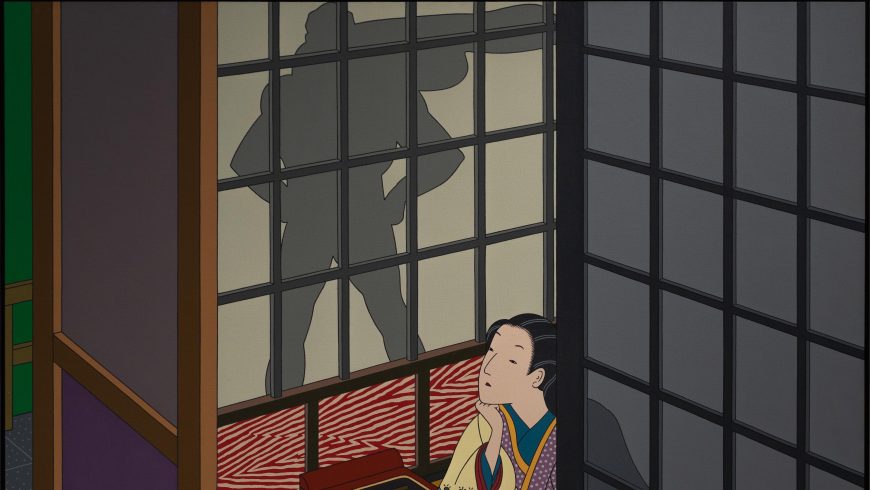Lucian Freud, Standing by the Rags, 1988-89, oil on canvas, 66.5 x 54.5″ / 168.9 x 138.4 cm (Tate Britain, London)
Lucian Freud, Standing by the Rags
[0:00] [music]
Dr. Steven Zucker: [0:06] We’re in Tate Britain, and we’re looking at Lucian Freud’s “Standing by the Rags” from 1988-89. It’s a pretty big oil. Like so many of his canvases, it’s a very, very forthright nude.
Dr. Beth Harris: [0:22] She’s life-size, and oddly positioned in that you expect her to be lying down, almost viewed from above. Most nudes are horizontal. So the fact that she’s vertical is odd. Then we notice that she’s actually standing yet leaning. It’s very odd.
Dr. Zucker: [0:40] It is. The space is really difficult to read in part because the rags give us no indication of space and actually obstruct the angle between the floor and the wall, which would give us some kind of clue as to what’s going on. She is standing. There’s weight on her feet. At the same time, she’s also leaning back.
[0:59] As she says in a taped interview, she’s leaning on a heater, which is actually warming the rags. Apparently, this was painted at night. It must have been exhausting for her. But here’s the thing about Freud. I don’t think any of that is important for him. I don’t think that there’s a conscious interest in dismantling perspective or any of those kinds of goals.
[1:18] I think that his concern was to reveal the experience of the body itself in the most direct and tangible way. Since we all share the experience of inhabiting a body, his rendering, really in the most unsparing way, of weight, of fat, of bone, of temperature, of texture, all of those things, that experience is something that is so incredibly immediate and powerful.
Dr. Harris: [1:46] What I see largely is paint. I see a body, but I’m also simultaneously seeing paint. I mean this really thick, almost stippling of it around her face, and neck, and chest, especially; a little bit on her thighs, calves, and knees, but really the face is almost broken apart by the paint.
Dr. Zucker: [2:10] Think about the incredible tradition of painting the nude throughout the history of art. This idealization, this beauty. That handling of the paint is not only actually conveying the body, but it’s also forcing us to rethink all those assumptions in a pretty violent and aggressive way.
Dr. Harris: [2:26] That’s absolutely true. We feel like, “I don’t want to look at this.” You have a very immediate, visceral reaction to it. There’s no question. In some ways, there’s a kind of actuality and realism to the body, and in other ways, the body is really quite distorted here. Her feet are too large. Her right arm is way too long.
[2:48] That foreshortening of her forearm and wrist is a little bit off. There’s a distortion.
Dr. Zucker: [2:55] When I see those kinds of distortions in Lucian Freud’s work, I see in some ways an attempt to place the body in the most direct way, almost in a more perceptually immediate way than a more classically proportioned figure might be. He’s trying to create the reality, in a sense, of that part that may be even slightly dislocated from another.
Dr. Harris: [3:17] There’s a kind of confrontation of the viewer…
Dr. Zucker: [3:21] I think that’s right.
Dr. Harris: [3:21] …that’s going on.
Dr. Zucker: [3:21] There’s no question.
Dr. Harris: [3:23] She’s so close to us, too.
Dr. Zucker: [3:24] She’s a reflection of who we are, even though we’re clothed. We’re upright. We may enter into the view of the painting with a kind of properness in a museum context. Nevertheless, there’s a kind of revelation of the reality of our own bodies.
[3:37] [music]
| Title | Standing by the Rags |
| Artist(s) | Lucian Freud |
| Dates | 1988–89 |
| Places | Europe / Western Europe / England |
| Period, Culture, Style | Contemporary |
| Artwork Type | Painting |
| Material | Oil paint, Canvas |
| Technique |
Loading Flickr images...


















